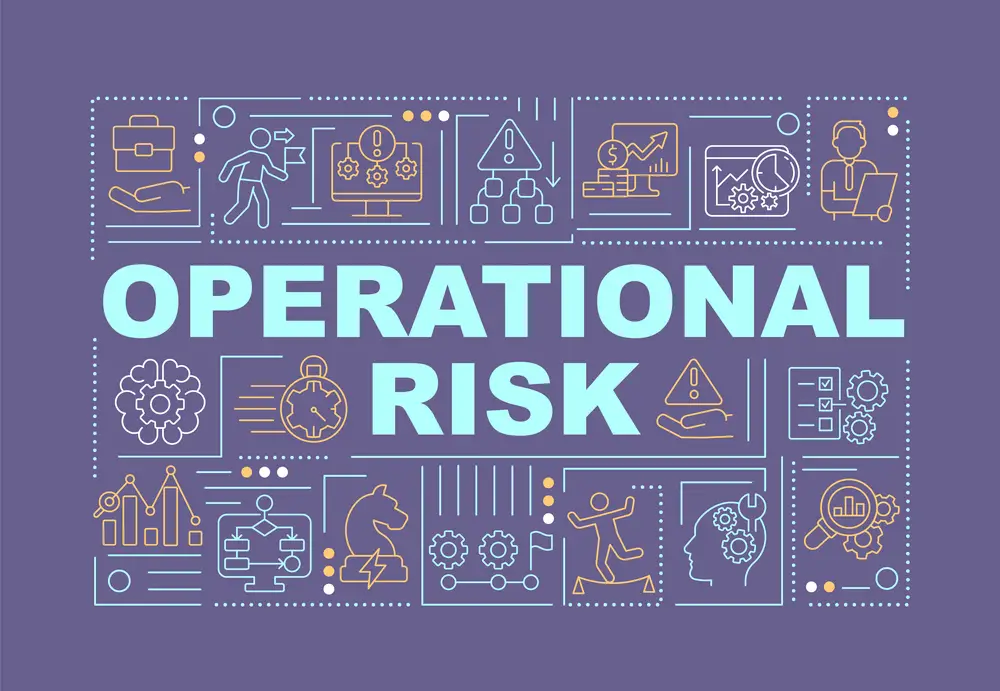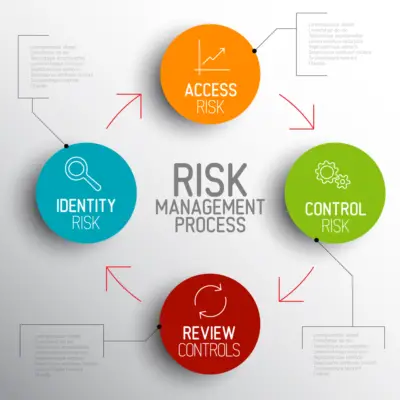In today’s highly competitive and rapidly evolving business landscape, an operational risk management framework has emerged as a vital component for success. As organizations and risk managers strive to navigate the complexities of risk, they increasingly rely on proven techniques like Risk Control Self-Assessments (RCSA) to identify, measure, and mitigate potential threats and business risks.
Risk Control Self-Assessment (RCSA) is an integral mechanism within the operational risk management landscape. This dynamic process not only scrutinizes and evaluates the potential operational risks within an organization but also rigorously assesses the efficacy of the controls implemented to mitigate these risks.
RCSA aims to foster a proactive risk-aware culture, encouraging organizations to identify, assess, monitor, and control operational risks, enhance operational efficiency, and ensure regulatory compliance. This robust process empowers organizations to avoid potential hurdles, reinforcing their strategic objectives and bolstering their risk resilience.
RCSA Operational Risk, the focus of this blog post, is a systematic approach that empowers businesses to proactively manage risk by engaging stakeholders, evaluating processes, and implementing effective controls.
Armed with an array of real-world examples, expert insights, and practical guidance, our informative and educational content will unravel the complexities of RCSA, equipping you with the essential tools to fortify your organization’s resilience.
Operational Risk and discover how this powerful methodology can drive success in an ever-changing business environment.
The primary aim of the RCSA (Risk Control Self-Assessment) and Operational Risk Policy is to create a unified risk self-assessment framework that evaluates Operational Risk and the overall effectiveness of the internal control environment across the bank.
RCSA data contributes to calculating capital charges for operational risk and is the foundation for the Advanced Measurement Approach (AMA) under Basel II guidelines.

Understanding RCSA and Operational Risk: A Deep Dive into Risk Control Self-Assessment
In the realm of risk management, operational risk and Risk Control Self-Assessment (RCSA) are two intertwined concepts that need thorough understanding for effective and sustainable risk mitigation.
The complexities and intricacies inherent in these concepts can often seem daunting, but they can be understood and implemented effectively with a step-by-step approach.
Operational Risk: An Overview
Operational risk arises from inadequate or failed internal business processes or, personnel, systems, or external events. It is an essential aspect of risk management in banking, primarily because of the potential for loss due to non-compliance with laws, regulations, or internal policies.
Operational risk is broken down into three categories, each of which is susceptible to loss events. These events can occur in any department of the bank, leading to monetary losses. By implementing controls and constant measurement of operational risk events, a bank can calculate an average loss frequency and value over a given time, leading to effective capital charge computations.
RCSA Process: A Step-by-step Guide
RCSA is a dynamic and iterative process of identifying operational risks, assessing key controls, and reporting on their effectiveness. It’s a proactive approach that aims to identify any control weaknesses and breakdowns and rectify them swiftly.
Step 1: Documenting and Defining
The first step of the RCSA process involves defining the organization’s hierarchy and listing top-level risks. RCSA entities or business units are defined based on this hierarchy, which will implement controls, measure risks, and continuously improve the risk management process.
Step 2: Identifying Risks and Controls
Each business unit also is tasked with evaluating risks and controls under three categories: risks emanating from top-level entities, regulatory risks, and additional risks not covered by top-level entities.
Step 3: Assessment of Risks and Controls
Only the material or important risks are tracked through RCSA. Managers of reporting units are fully responsible for identifying risks, tracking incidents, linking them to risks, implementing controls quarterly operational risk report, and reporting data in specified formats.
Step 4: Reviewing and Rating
The head of the RCSA entity assigns a Risk & Control Rating to each Important Risk and the risk assessments of the RCSA Entity as a whole. The rating must be “Acceptable,” “Acceptable with Concerns,” or “Less-than-Acceptable.”
Key Risk Indicators (KRIs)
KRIs are essential tools in the RCSA process, as they help classify and assess risks by risk levels. Only those risks identified as important or key risks should be continuously monitored and reviewed through the RCSA process.
Loss Event Data
Each RCSA entity must capture actual loss events or incidents during the reporting period. Each loss event will have specific attributes which are crucial for risk assessment and mitigation.
To sum up, RCSA is a continuous, proactive, and iterative process that plays a crucial role in managing and mitigating operational risk in banks. By understanding and implementing RCSA effectively, banks can reduce their exposure to operational risks and create a robust and resilient risk management framework for financial institutions.

Corrective Action Plan: A Necessary Response
One crucial aspect of the RCSA process is the implementation of a Corrective Action Plan (CAP). A CAP is required when controls are found to be inadequate to mitigate risk. It addresses areas of weakness identified during testing where controls are absent, inadequate or ineffective controls adequately address risks.
A CAP should be put into action when there’s a lack of Key Controls against an Important Risk, a key control hasn’t significantly mitigated an Important Risk, or the results of testing conclude that the controls aren’t operating effectively.
If the CAP can’t be implemented within the stipulated time frame, compensating controls that mitigate the Important risk and control, self-other Risks must be identified or put in place as a temporary measure.
Assessing the Effectiveness of Controls
Control effectiveness is assessed by selecting the appropriate sampling size, identifying an independent tester to execute the test, summarizing testing results, documenting the location or other associated controls, attaching evidence to prove the test’s outcome, and determining the control’s operating effectiveness.
The results of control tests are categorized as “Satisfactory,” “Not Satisfactory: Business Issue (BI),” or “Not Satisfactory: Major Business Issue (MBI).” These categories reflect the extent to which the Key Control operates effectively and could potentially impact the RCSA Entity.
Assigning Ratings to Key Controls and Risks
The effectiveness of Key Controls and the level of Important Risk determine the Risk and Control Rating for each RCSA Entity. Each Important Risk is assessed on a residual risk basis as “Acceptable,” “Acceptable with Concerns,” or “Less-than-Acceptable.”
An “Acceptable” rating means that Key Control(s) are operating effectively. “Acceptable with Concerns” implies that while the Key Control(s) are not operating satisfactorily, compensating controls are in place to reduce the risk to an acceptable level.
A “Less-than-Acceptable” rating indicates that the Key Control(s) are not operating effectively, and there are no compensating controls to reduce the risk to an acceptable level.
Finalizing RCSA Entity rating
Once the Risk & Control Ratings for each Important Risk are determined, a Risk & Control Rating must be assigned to the RCSA Entity as a whole. This overall rating is the responsibility of the head of the RCSA entity and takes into consideration the Risk & Control Ratings of each Important Risk, any other known issues, and management’s judgment.
An organization-wide risk rating can be obtained by consolidating ratings across RCSA entities. This consolidated organizational risk appetite rating can be based on the worst rating or a weighted average of ratings of various RCSA entities, providing a comprehensive picture of the organization’s overall risk exposure.
Conclusion
The Risk Control Self-Assessment (RCSA) process provides a comprehensive approach to identifying, assessing, and mitigating operational risk. By understanding and implementing each step of the process, organizations can ensure they are well-equipped to manage potential threats, enhance their internal control environment, and ultimately achieve their strategic business objectives.
While the process might seem intricate, with consistent practice and a clear understanding of each step, the RCSA process can become an integral part of an organization’s risk management framework, ensuring sustainable success in a risk-filled business world.

Chris Ekai is a Risk Management expert with over 10 years of experience in the field. He has a Master’s(MSc) degree in Risk Management from University of Portsmouth and is a CPA and Finance professional. He currently works as a Content Manager at Risk Publishing, writing about Enterprise Risk Management, Business Continuity Management and Project Management.


